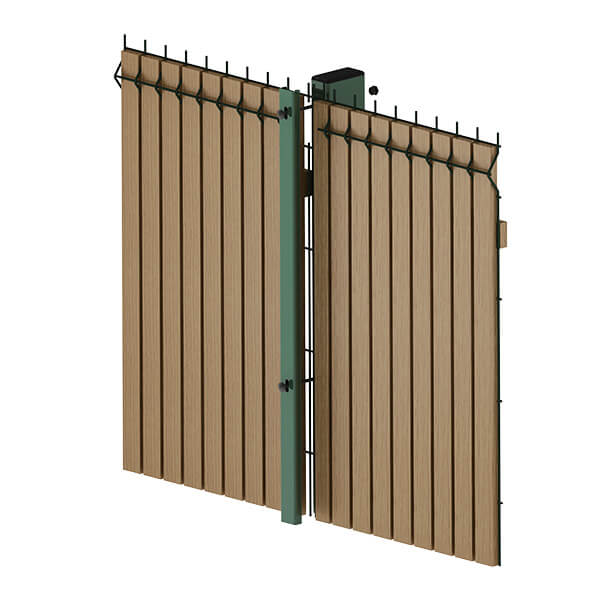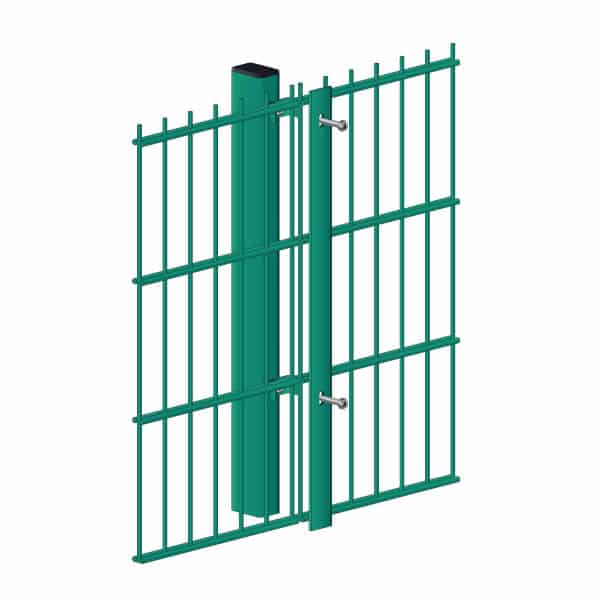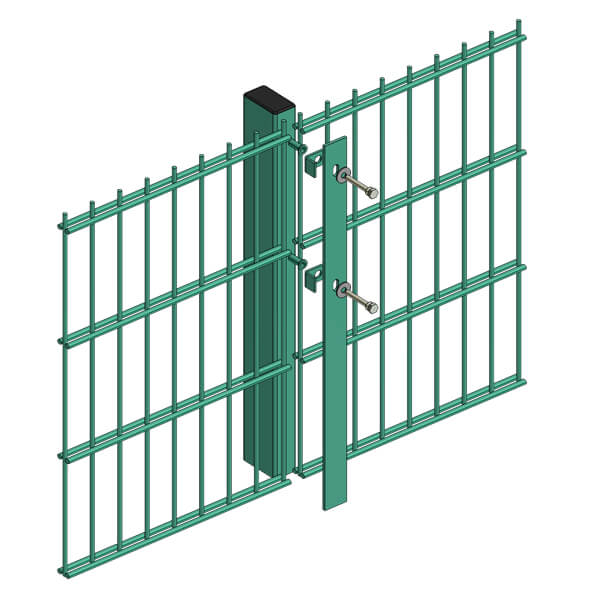Published:
Prioritizing the safety and well-being of students and staff stands at the forefront of establishing an environment conducive to education. A crucial element in accomplishing this objective involves the implementation of secure perimeter security fencing and gates. This blog explores the significance of school fencing, scrutinizing its function in safeguarding the premises, discouraging unauthorized access, and cultivating an ambiance that nurtures development.
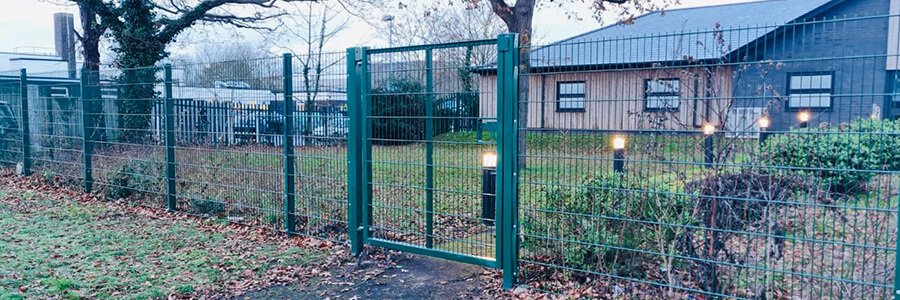
Providing Recommendations for School Fencing Heights
Creating a clearly defined boundary around the school’s perimeter and entrance gates through a well-constructed fence serves as a vital barrier between public and private property. It sends a powerful message to visitors, highlighting the school’s unwavering dedication to safety and establishing a positive atmosphere for anyone entering the premises.
According to the Site Security Guidance issued by the UK Department for Education (2019), the boundary fence acts as the primary line of defence, necessitating the installation of secure fencing or railings. The recommended options include Weldmesh fencing to BS1722, expanded metal, or railings with a height exceeding 2.0 meters. A minimum height of 2.0 meters is considered essential to create an obstacle that makes it difficult for an average adult to climb over. Some styles of mesh fencing, such as V-Mesh, incorporate anti-climb features such as folded ‘Vs’ into their design, further enhancing security. For the primary perimeter fence line, a standard height ranging between 2.0 meters and 2.4 meters is recommended.
Additionally, it is common for schools to have supplementary fencing within the main perimeter, designed to prevent unauthorized access to specific areas. Although this type of fencing may not be as crucial for security as the main boundary fence, it is still advisable to maintain a minimum height of 1.8 meters, using a similar style to the other school fencing throughout the premises.
By adhering to these guidelines, schools can ensure that their perimeter security fencing acts as a robust deterrent against unauthorized entry, fosters a sense of safety, and reinforces the overall security measures in place.
British Standard-Compliant Fencing for Schools
The British Standards Institution (BSI), a highly respected standards agency, has established comprehensive guidelines for mesh steel fencing that are endorsed by the Department for Education. According to these guidelines, boundary fences should have a minimum height of 2.4 meters and employ a mesh with horizontal wires of at least 4.5mm thickness and vertical wires of at least 3.75mm thickness. At Alexandra, our Protek 1000 and 2000 V-Mesh systems fully adhere to this standard. Our range also includes the 656 and 868 twin-wire fencing systems, both of which meet the recommended specifications for mesh steel fencing as outlined by the BSI guidelines.
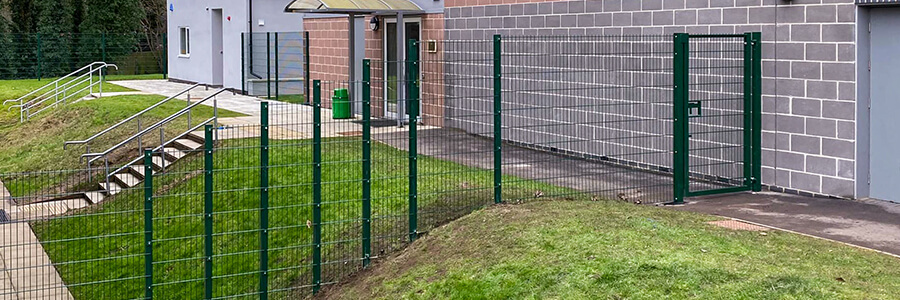
Considering Aesthetic Properties
Local authority guidelines emphasize the importance of maintaining a balance between security and aesthetics when selecting school perimeter fencing, particularly in rural areas. The goal is to avoid creating a fortress-like appearance and instead honour the style and value of the local surroundings. Therefore, we discourage the use of fencing options with spikes or thick bars, such as metal palisade or tall vertical bar railings, around schools.
Mesh fencing is a popular choice as it offers a reasonable level of security while preserving visibility and seamlessly blending into the background. The wire apertures typically range between 4mm and 8mm in thickness, ensuring adequate visibility. When it comes to choosing the colour of the school fence, it is essential to consider the guidelines, which state that it should align with the “ethos and culture” of the school. RAL 6005 green is often a favoured option for powder-coating school fencing, as it harmonizes well with existing vegetation and reduces light reflection, enabling passersby to be observed through the fence more easily.
The advantage of powder-coated mesh fencing lies in its flexibility to match nearly any colour requirement. If your school has a specific colour preference, we can ensure that the fencing closely matches it. By following these considerations, schools can achieve a balance between security and aesthetics, ensuring that the perimeter fencing complements the surrounding environment while providing the necessary level of safety.
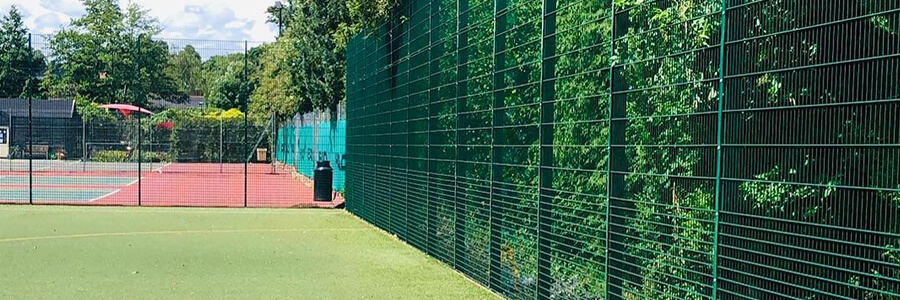
Maintenance, Lifespan, and Anti-Vandalism Considerations
Ensuring the long-term durability and effectiveness of new fencing installations in educational premises is of utmost importance. In comparison to timber fencing, which demands regular treatment and painting, mesh fencing offers a low-maintenance alternative. The powder-coating applied to galvanized steel provides excellent protection against weathering, granting metal mesh fences a lifespan of 20-30 years, with regular cleaning to remove surface dirt. At Alexandra, we have full confidence in the quality of our mesh fencing systems and offer a 15-year guarantee that covers the performance and appearance of the panels and posts.
In areas where fence lines are prone to significant foot traffic or may encounter impact from sports balls, we recommend the use of a twin-wire mesh system, as the best fencing for schools. Systems like the 656 or 868 twin-wire systems provide superior rigidity and strength compared to V-mesh systems, enabling them to withstand minor damage more effectively.
To further enhance resistance against vandalism, we suggest opting for a clamp bar system instead of a clip system for fixings. For example, our Protek 868 Clamp utilizes a full-length metal bar between each panel, providing additional strength and minimizing individual weak points, as the bar runs the entire height of the fence line. The Department of Education guidance stresses the importance of fencing that is not easily vandalized, and the use of a clamp bar system reinforces this requirement. If additional privacy is required, our Protek 2000 Privacy Fencing ensures the best of both worlds; a strong mesh fence system, combined with a solid barrier to prevent sight lines.
By selecting durable and sturdy mesh fencing, employing twin-wire systems in high-impact areas, and utilizing clamp bar fixings, educational institutions can ensure their fencing remains in optimal condition, reduces maintenance efforts, and maintains the necessary standards of resistance against vandalism.
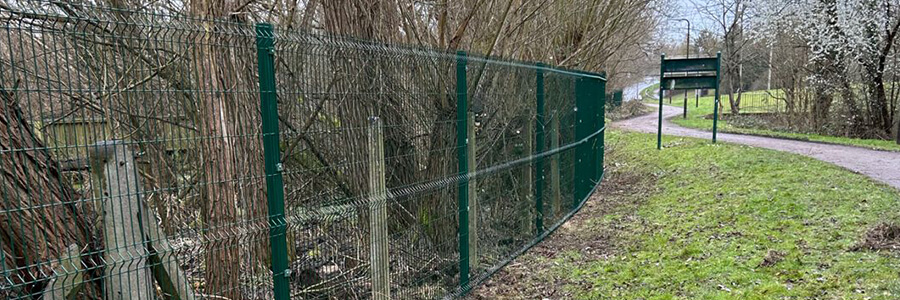
Schools in Higher Crime Areas
The selection of security fencing for schools can be influenced by the location and the level of crime prevalent in the surrounding area. Guidelines provided by Secured By Design, the official Police Security Initiative, emphasize that in areas with an average risk of crime and extensive perimeter, it may be more suitable to utilize a Security Rating (SR) rated fence system for the main perimeter. An SR1 rated mesh fence is tested to withstand intrusion for a specified duration, typically 1 minute, offering sufficient protection against intruders or vandals equipped with basic tools. It is worth noting that higher levels of SR rating can be costly and visually unappealing. Hence, we recommend employing SR1 rated fencing as it maintains the visual appearance of a standard mesh systems.
For schools situated in areas with a higher-than-average crime rate or inner-city locations, we suggest installing a secondary inner security fence as an additional measure in case an intruder manages to breach the perimeter fence.
By taking into account local crime levels and adhering to the guidelines provided by Secured By Design, schools can select appropriate security fencing systems that offer the necessary level of protection while maintaining an aesthetically pleasing appearance. The implementation of secondary inner security fencing, where needed, further enhances the existing security measures to ensure the safety of students, staff, and the school premises.
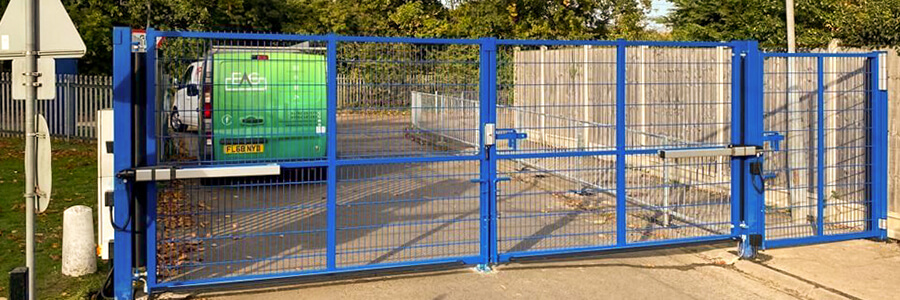
School Security Gate Requirements
Ensuring proper access control and the functionality of security gates within the perimeter fencing of schools is of paramount importance. The gates must be safe for use by students, staff, and visitors. It is crucial that the hinges are sturdy and designed in a manner that prevents the gate from detaching from the mounts in case of hinge failure. One effective solution is the installation of gate restrainers between the post and the gate leaf. These safety devices bear the weight of the gate leaf and prevent it from collapsing. At Alexandra, safety is our priority, which is why all of our Protek gates come equipped with gate restrainers as a standard feature. Additionally, we utilize inverted hinges to ensure that the gate cannot be lifted off its mounts, adding an extra layer of security.
By incorporating robust hinges and gate restrainers, educational institutions can ensure that their gates remain secure, dependable, and safe for everyone using them. At Alexandra, we are dedicated to providing fencing solutions that prioritize the safety and peace of mind of our customers.
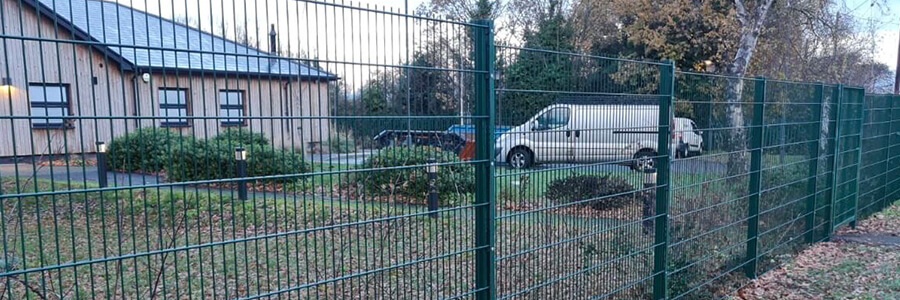
School Fencing Considerations For Your Next Project
It is important to remember that school fencing and gates have a vital role in establishing a safe and secure environment for students, staff, and visitors. Investing in the right options is always worthwhile.
If you are searching for a reliable provider of quality security fencing for your school, look no further than Alexandra Security. We offer a wide range of high-quality solutions that are suitable for all types of educational facilities. Contact our expert team to discuss your requirements.



